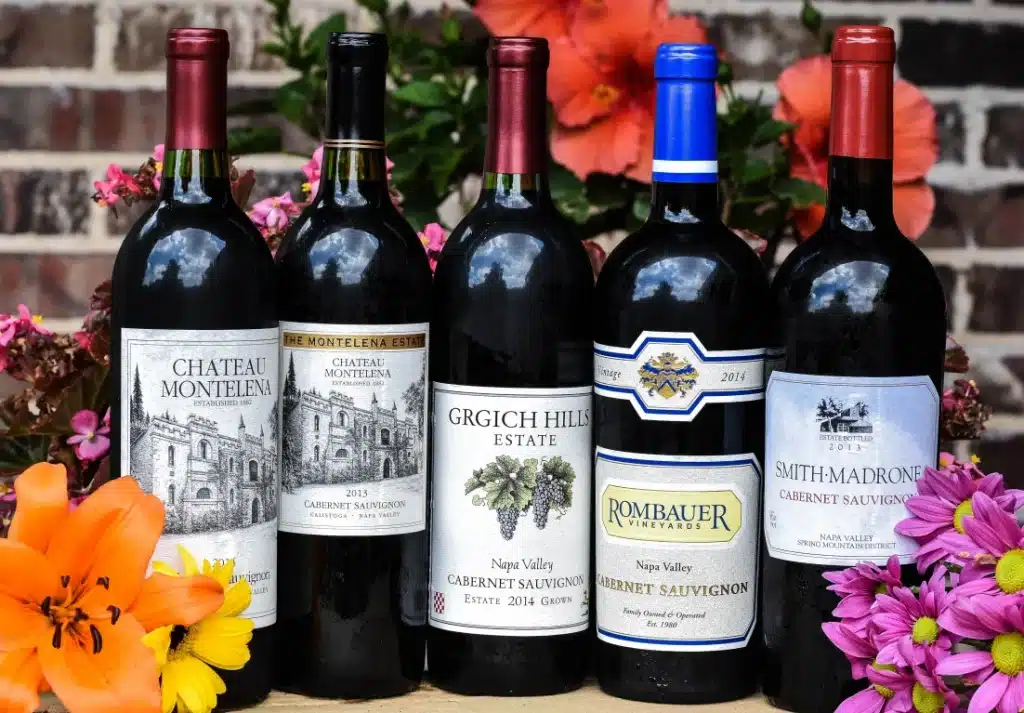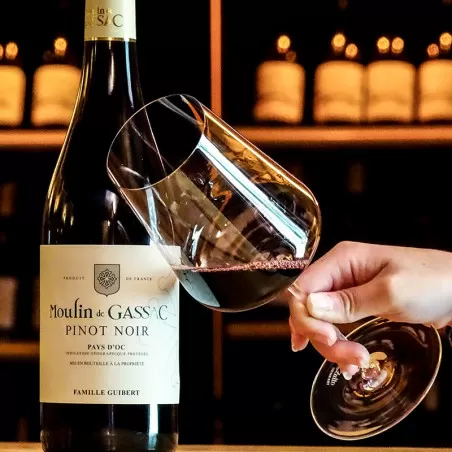The wine world in the year to come. The wine industry is emerging from yet another chaotic year of conducting business in the middle of a global pandemic. Between catastrophic weather events (including California wildfires, devastating April frosts in France and Italy, and flooding in western Germany) and global supply chain disruptions, plus the growing threat of price inflation, instability has often felt like the only constant.
Despite it all, however, the outlook for this coming year is far from bleak. With restaurants steadily on the rebound and off-premise sales continuing their post-pandemic boom, the industry is once again proving its endless capacity for creativity, adaptability, and resilience. “There are many reasons for optimism,” says Ian Downey, the executive vice president of Winebow Imports. “The market will be more responsive to the bold, the new, and the innovative in the year to come.”
In that indomitable spirit, explore six key trends that will continue to shape the wine world’s trajectory – whatever else the year may bring.
Supply chain issues and price inflation wreak havoc—with an unexpected upside
Poll a cross-section of wine professionals across all sectors of the industry, and the consensus is unanimous: Supply chain issues will continue to disrupt all aspects of the trade, causing inevitable price inflation and shortages for familiar brands.
While we’ve already seen these issues impact the Champagne market, fueling fears of inevitable gaps through the holidays and beyond, experts expect the effects to be much more widespread. “Our industry is no different than others that have been impacted by supply chain difficulties, and we are starting to see inflationary prices from our winery partners that will come into effect,” explains Rocco Lombardo, the president of Wilson Daniels. “We’re headed into an interesting time with regards to managing costs and margin structure.”
Faced with rising prices, shipping delays, and limited inventory, buyers will increasingly be forced to look beyond the usual tried-and-true options. While that’s bound to create no shortage of headaches, Christopher Struck, the beverage director for Lili’s New York and Washington, D.C. locations, predicts that the situation will incentivize restaurants to turn to boutique wholesalers that carry alternatives to the usual large brand names.
“In my experience, smaller distributors will be more inclined to hustle and get you what you need,” explains Struck. “They also tend to work with independent, conscientious growers that better align with my ethos as a buyer.”
Vanessa Conlin, MW, the chief wine officer at Wine Access, agrees. In her view, the coming year will set the stage for up-and-coming regions and producers to gain newfound visibility and market share. “These shortages offer a chance to get lesser-known wines in front of consumers who would have otherwise reached for familiar things like Burgundy or Napa Cabernet.” As these European benchmark items become more difficult to secure, “we’re going to see other regions making a play to fill the gap,” says Conlin. That’s welcome news for regions eager to break through.

Stylistic Categories Continue to Blur
The world of wine has long conformed to a fixed set of stylistic categories, grouped primarily according to colour. But as a younger generation of boundary-pushing winemakers across the globe explore an array of alternative winemaking approaches and techniques, those once-stable classifications are beginning to blur.
“We’re seeing more and more people making these experimental wines that don’t have a firm definition,” explains Chris Leon, the owner of Leon & Son retail shop in Brooklyn, New York and Grand Rapids, Michigan. He draws a parallel between the previous fashion for genre-defying macerated whites, or orange wines, and a recent interest in co-ferments, produced by fermenting multiple grape varieties (both red and white alike) together in one vessel.
Bright, fresh, and eminently crushable, the resulting wines successfully blur the line between pale red and dark rosé, but couldn’t be more attuned to the current “chillable red” zeitgeist. According to Leon, we can expect to see more of this stylistic ambiguity in the future. “The rise of this style of wine feels very apropos at a time when people are increasingly willing to sidestep strict classifications or labels and simply take things for what they are,” he says.
Natural Wine Expands Into New Markets
There once was a time when the natural wine counterculture operated within a few clusters of activity confined to large coastal cities like New York, Los Angeles, and San Francisco. With a growing number of small-scale, natural-focused importers, however, the movement is quickly making inroads into parts of the country that had long been dominated by large national distributors and corporate-owned brands.
Case in point: the Raleigh-based distributor Kellogg Selections, run by former New York sommelier Jeff Kellogg. Emblematic of this larger shift, he moved south in 2017 to introduce independent and, in many cases, low-intervention producers (such as Beaujolais’ Mee Godard or California’s Birichino Winery) to consumers across the Carolinas.
“I knew there was a real thirst among consumers here to drink things other than Napa as a category, but there weren’t enough people filling that void,” explains Kellogg. “My favourite part of selling these kinds of wines in the Carolinas is that I’m able to introduce natural wines to people for the first time. I get to provide that experience all the time to buyers who were previously working in places that just made sure they were checking off the usual boxes of California Chardonnay or Argentinian Malbec.”
With interest in the category steadily expanding across the United States—“We don’t see interest in natural wine slowing down at all in 2022,” observes Sally Stewart of Colorado’s Denver Wine Merchant—the movement has officially passed from fringe to an essential pillar of wine’s new mainstream. As that evolution continues to unfold, the naturalist gospel is poised to convert a whole new demographic of consumers, many of whom never considered themselves wine drinkers. “If we’re talking about the market in our region, so many people are coming to wine from other beverage categories, especially craft beer,” says Kellogg. “In my mind, natural wine has so much more room to grow.”
Sparkling Wine Finally Becomes an Everyday Staple
According to off-premise sales data from Nielsen, the sparkling wine category grew by more than 13 % among American drinkers over the past two years—an upward momentum that shows no sign of abating anytime soon, even with the threat of Champagne shortages and price hikes.
Unsurprisingly, Champagne sales have dominated the premium sector of the sparkling market, with sales between January and August jumping 11.9 % compared to the same period in 2019, according to Reuters. But value-driven options have fueled much of the category’s surge in popularity. “We’re seeing the same dynamism with our Prosecco Superiore, our Crémant d’Alsace, and our premium domestic sparkling wine,” reports Lombardo.
As drinkers gravitate towards these more affordable forms of fizz, they’re finally knocking the category off its “holidays and special occasions” pedestal and reclaiming bubbles as part of the everyday drinking repertoire. Though still extremely niche in terms of national sales, one alternative sparkling wine style has played an outsize symbolic role in that transformation: cloudy, crown-capped pétillant-natural.
“There’s been a steady interest in pet-net throughout the year, not just on holidays,” says Eric Moorer, the sales director at Washington, D.C.’s natural-focused Domestique Wine. If his experience on the sales floor had taught him anything, it’s that the category’s appeal has yet to peak, helping to make the wider bubbly landscape more democratic. “As somebody who has always championed sparkling wine as an everyday wine, pét nat has made that conversation much easier for me,” he says. “People no longer believe that sparkling wine is for Fridays and Saturday nights; they’re popping open bottles of pét-nat on Mondays and Tuesdays.”
Ecommerce Gets Creative
Even as the world has largely reopened, online wine sales have remained strong. But the future of the ecommerce sector now faces an important challenge: namely, how to find creative ways to drive digital engagement and retain their recently acquired customer base.
The key to maintaining that growth? Convincing customers that shopping for wine online can be every bit as gratifying as seeking recommendations from a trusted neighbourhood wine merchant. “We gained a lot of new customers during the pandemic, so a lot of what we did over the past year was trying to set ourselves up to deliver a better experience than customers were able to get in a traditional store or retail environment,” says AJ Resnick, the chief experience officer at Wine Access.
Critically, as Joshua Lincoln, the senior commercial director—of Europe, for Vivino, points out, digital platforms enjoy a distinct advantage: a treasure trove of data with which to customise the consumer’s experience. To him, capitalising on that ability will be the wave of the future for the ecommerce space. “We’ve got more data than any store manager could ever keep in their head, so we can be way more personalised than any single individual,” he explains. “The real winners in the e-commerce space over the coming five to 10 years will be the ones like us, who focus heavily on this aspect of personalisation.”
Eschewing Formulaic Restaurant Wine Lists for Experimental By-The-Glass Programs
With prices rapidly rising, the pre-pandemic trend of smaller, more focused wine lists will surely extend into 2022. At the same time, though, we can also expect beverage programs to become exponentially more experimental, moving beyond the established templates and reference points that were once considered the industry’s standard. In particular, as sommeliers feel increasingly empowered to depart from expectations, they’re radically reconsidering conventional wisdom about what it means to run a successful by-the-glass program.
To Dallas-based sommelier Tiffany Tobey, the glass pours she offers function as a critical form of research and development, allowing customers to explore more obscure expressions in a non-threatening and cost-effective format. “My by-the-glass program is geared towards a completely different compilation of regions and off-the-beaten-path stuff,” she explains. “I’m offering stuff by the glass that people have never heard of before, but they’re still willing to try it because the rest of my list still contains plenty of the familiar favourites that make them feel comfortable.”
At the two restaurants he oversees, Struck has adopted a similar approach. “I think there are too many self-fulfilling prophecies with beverage directors who insist that you set yourself up for failure if you don’t offer certain specific reference points by the glass,” he says. “That may have been true in the past, but not so anymore. I mean, we’ve already entered a whole new era of dining, haven’t we?”





